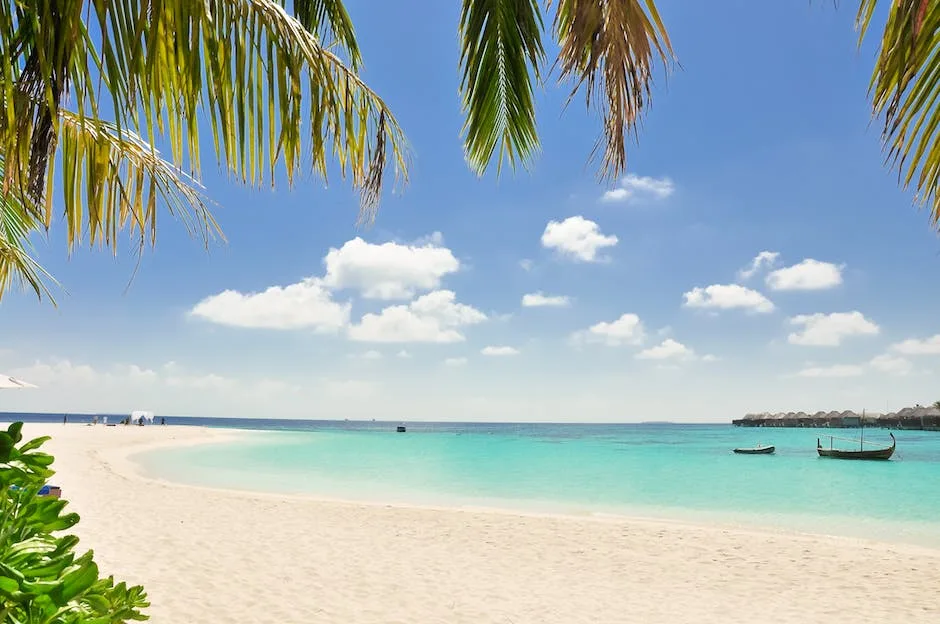If you have palm trees on your property, you may be wondering if you are supposed to trim them. The answer is that it depends on the type of palm tree you have. Some palms need regular pruning in order to stay healthy, while others only need to be trimmed if they are causing a problem.
No, you are not supposed to trim palm trees.
What happens if you don’t trim your palm trees?
If you have palm trees on your property, it’s important to make sure they are well-maintained. Overgrown fronds can fall and cause accidents or injuries, and if they’re close to your home, they can also be a fire hazard. Regular pruning and care will keep your palm trees looking their best and help avoid any potential hazards.
Pruning your palm trees during their dormant season can actually do more harm than good. Palm trees are much more susceptible to cold damage during this time, so it’s best to wait until late fall or winter to prune them. Otherwise, there is no ideal time of year to trim your palms. They’ll take pruning any time as long as it’s not the cold season.
Why is it important to trim palm trees
Pruning and trimming your palm trees will help them to thrive. Removing heavy pieces of old growth will allow new growth to flourish, and getting rid of dead waste will help to keep the tree healthy. A well-trimmed palm tree will be a beautiful addition to your home!
Pruning palm trees is actually quite simple. Remove dead fronds and old fruit stems. Once the old fronds turn completely brown, it’s safe to prune them from the palm. Just make sure you wait until there is no green left on the frond.
How much should you trim a palm tree?
The cost to trim a palm tree by height will vary depending on the height of the tree and the location.
If you want to remove a palm tree, you will need to use a sharp blade. Come behind the front of the palm tree and remove the tree trunk.
Do palm trees grow faster if you trim them?
This is a myth that has been perpetuated for many years and has caused gardeners to do extensive palm tree pruning that doesn’t help and can actually hurt the tree. Palm trees, like any other plant, need to be pruned carefully in order to avoid damaging the tree.
Trimming back a palm frond skirt to the bark not only reveals the trunk of the tree, but eliminates the risk that it harbors pests. The shaggy fronds are favorite habitats of rats, snakes and scorpions. The dead material is also a fire hazard.
Do palm trees grow back after trimming
If you’re planning to cut your Palm tree at the trunk level, it will NOT grow back. The only way that Palm tree growth can occur is at this base level called the growing tip, or sometimes even called the crownshaft. Cutting this part of the trunk entirely kills the plant.
Thanks for bringing this to our attention! We’ll make sure to have our team take a look at the palm trees and make sure they are getting the proper amount of water.
How do you maintain a palm tree?
Palm trees are tropical perennial plants that need proper care and maintenance to remain healthy and happy. Some of the key aspects of care include irrigation, mulching, and pruning.
Irrigation is vitally important for palm trees. They are sensitive to moisture levels and too much or too little water can be detrimental. The best way to water palm trees is to use a soaker hose or drip irrigation system.
Mulching is also important for palm trees. Mulch helps protect the roots and retains moisture. A layer of mulch 2-3 inches thick is ideal.
Pruning and sanitation are also important for palm trees. Pruning helps maintain the shape of the tree and keeps it from getting too large. Sanitation helps prevent pests and diseases.
One way to stop a single-trunk palm from growing taller is to cut off the growing tip. This will kill the plant.
How long does it take for a palm tree to be full size
Bamboo is an amazing plant that can grow very quickly. It usually grows more than a foot a year and can reach its full height in 20 years or less. Bamboo is a great plant to use for privacy screens or as a decorative element in your garden.
The lack of secondary growth in palms contributes to their cylindrical shape – as the stem cannot increase in width, it can only grow taller. This is in contrast to hardwood trees, which can grow wider as well as taller due to their secondary growth.
How do you trim a palm tree without spiking?
A bucket lift provides an alternative to trimming palms that will limit damage to the tree. A trained palm tree technician is lifted up to the height of the fronds from the lift and is positioned to safely trim fronds without damaging the trunk or risking injury to the trimmer.
There are a few things that you can do in order to help your plants get more sunlight. One thing that you can do is to keep your plants in a place where it would be getting at least a few hours of direct sunlight every day. Another thing that you can do is to rotate your plants so that they would be getting an even amount of sunlight all around.
How long do palm trees live
Palm trees have relatively short lifespans compared to other trees. The areca palm has a lifespan of only 40 to 50 years, while the popular coconut palm lives between 70 and 100 years. Most date palms have a lifespan of 100 to 120 years, but in some cases they can reach 200 years of age.
When healthy, palm trees rarely topple over due to wind, says arborist Wayne Tyson. “They can blow back and forth and never break,” he said. What allows them to grow so tall is their system of long, thin roots that can extend far and deep into the ground. But in urban settings, there can be restrictions.
How often do palm trees need to be skinned
Only cut the fronds that are dead or dying and be attentive not to damage the live tissue of the frond. Also be very wary that cutting too deep into the tree trunk can and will leave scars to the palm tree, which in short will hurt the tree when it comes to the transfer of nutrients. Skinning a palm tree should be limited to only once a year.
When a tree is damaged by removing a ring of bark, it may die depending on how completely it was girdled. Removal of even a vertical strip of bark less than one-fourth the circumference of the tree will harm the tree, but not kill the tree.
What happens if you strip bark off a tree
Bark stripping by squirrels can harm or kill trees outright, or make them susceptible to insect infestation or fungal pathogens. Squirrels prefer to strip bark from small trees (less than 24 inches). Even if trees aren’t killed outright, bark stripping can stunt a tree’s growth or lead to malformation of the wood.
If you cut the top off a palm tree, it will slowly die. The tree will not branch or bud out, but will simply rot from the top down. This is because the tree’s leaves produce the food that the tree needs to survive. Without leaves, the tree cannot produce food and will slowly die.
Should I cut off yellow palm leaves
Whenever you remove fronds from a palm tree, you run the risk of pushing up nutritional deficiencies into the new growth. This can potentially lead to the death of the palm. For this reason, you should only remove fronds that are totally brown.
If an individual palm trunk is removed, it will not be able to heal itself. Even if you cut off the trunks near the root level, suckering will explode from this level and will eventually sprout and develop into new healthy palm tree trunks.
Why do they put metal rings to the palm trees
The function of a tree wrap is to protect trees from pests, injuries, or both. Tree wraps come in a variety of materials, but most are made from some type of metal. They are applied to the trunk of the tree in a spiral pattern, starting at the bottom and working up. Some tree wraps have a adhesive backing that helps to keep them in place, while others must be tied or stapled on.
Tree wraps are most often used on young trees, as they are more susceptible to injury and damage from pests. Wrapping the trunk of the tree will help to keep pests from being able to climb the tree and reach the leaves or fruit. It can also prevent animals from rubbing against the tree, which can damage the bark. In areas where deer are prevalent, tree wraps can be particularly important in preventing damage.
Tree wraps should be applied in the fall, before the winter weather sets in. They should be removed in the spring, after the last frost. Leaving the wrap on for too long can cause the tree to overheat, as the metal will trap the sun’s heat.
Some palms have trunks that are covered in husks or fiber, giving them a hairy or spiky appearance. This can be an advantage in that it can help the palm to climb or providing support in windy conditions. Additionally, the fibers can provide some level of protection against herbivores.
Should you water palm trees everyday
Purchasing a new palm means that you will have to water it every day during its first week. However, you can switch to every other day during the second week. During the third week, you should water the palm three times a week. Once the palm is established, you can water it as normal. For more established palms, you should only have to water them two to three times per week—and only if there has been no rainfall.
To ensure that your palm tree thrives, it is important to water it frequently. Palm trees require moist soil with plenty of water in order to prosper, so make sure to keep an eye on the moisture level of the soil and supplement as necessary. Your palm tree will thank you for it!
Final Words
No, you are not supposed to trim palm trees.
No, you are not supposed to trim palm trees.
Jackson Hill is a passionate arborist with years of experience in the field of trees. He developed his fascination with trees at a young age, spending countless hours exploring the forests and climbing trees. Jackson went on to study arboriculture and horticulture at Michigan State University and later earned a degree in forestry from the University of Michigan.
With his extensive knowledge and expertise, Jackson has become a trusted authority on trees and their impact on the environment. His work has helped shape the field of arboriculture and he continues to be a leading voice in the industry.
